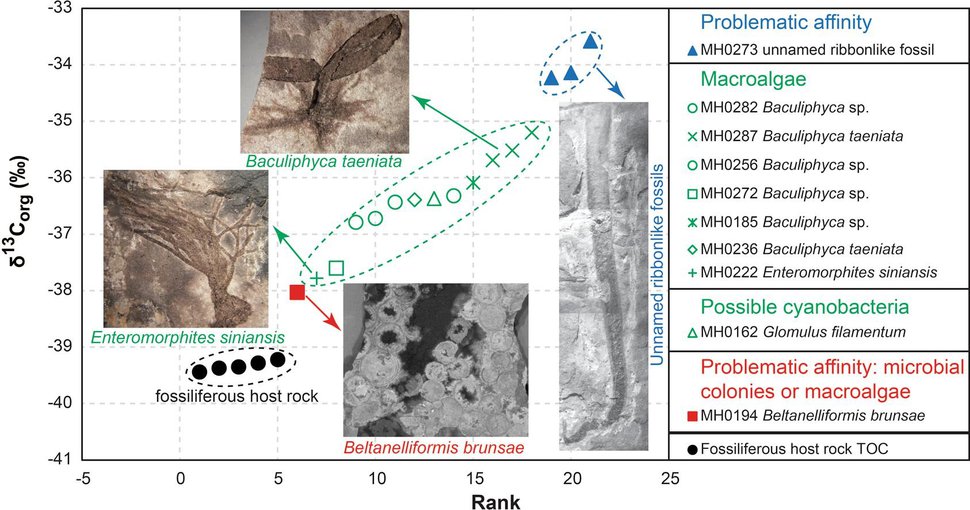
March 12, 2018
Research Highlight
New Insights into Life on Earth 551 Million Years Ago
Integrated biostratigraphic and chemostratigraphic investigations from the Doushantuo Formation

Stable carbon isotopes of sedimentary kerogens and carbonaceous macrofossils from the Ediacaran Miaohe Member in South China: Implications for stratigraphic correlation and sources of sedimentary organic carbon.Image credit: Xiao et al. (2017) :10.1016/j.precamres.2017.10.006.
Researchers working in the Doushantuo Formation of Southern China have provided integrated biostratigraphic and chemostratigraphic investigations of samples from the Ediacaran Period (635–541 Ma). Organisms from this period, known as Ediacara biota, are the earliest known fossil record of communities of macroscopic, complex, multicellular organisms on Earth. Studying Ediacaran fossils can shed light on this important period in the evolution of complex life on our planet.
Correlating information from different stratigraphic columns in which Ediacara biota are found relies on variations in the ratio of Carbon-13 (δ13Ccarb) found in samples. However, studies can be complicated when the samples come from different lithologies (rock types) across the stratigraphic column. The Ediacaran succession in the Doushantuo Formation occurs through a bed of mixed shale and carbonates, and provides a unique opportunity for biostratigraphic and chemostratigraphic investigations. By focusing on a region of the formation known as the Miaohe Member (∼551 Ma), a team of researchers has provided new information about the potential types of organisms that once lived in this environment.
The study, “Stable carbon isotopes of sedimentary kerogens and carbonaceous macrofossils from the Ediacaran Miaohe Member in South China: Implications for stratigraphic correlation and sources of sedimentary organic carbon,” was published in the journal Precambrian Research. The work was supported by NASA Astrobiology through the Exobiology & Evolutionary Biology Program.
Further Resources:
Ancient Records in the Ediacaran Doushantuo Formation